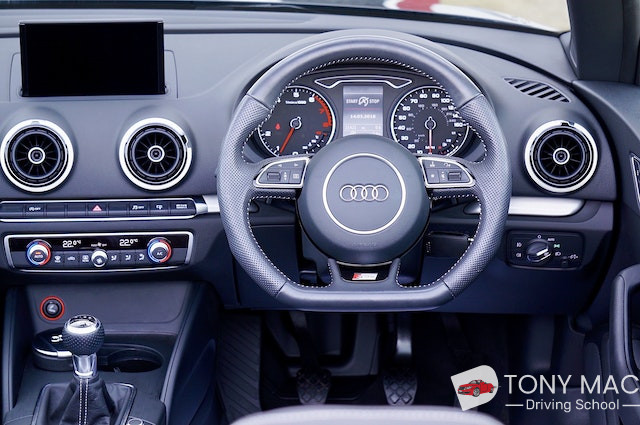Night Driving Lessons: Enhancing Safety and Confidence on the Road
Driving at night presents special obstacles that every driver must face eventually in their lives. The reduction in presence, the capacity for tired motorists sharing the road, and the noticeably different behavior patterns of night-time motorists all add to an environment that requires specialized skills and knowledge. This short article dives into the complexities of night driving lessons, supplying insight into why they are important, essential techniques for effective night driving, and responses to regularly asked questions.
Why Night Driving Lessons Are Important
Night driving positions a distinct set of difficulties that make specialized training helpful. Here are some reasons night driving lessons can considerably improve a driver's skillset:
- Reduced Visibility: With less light to illuminate the road, it becomes significantly hard to view obstacles and other cars. Night driving lessons offer practical techniques to improve a driver's capability to browse in low-light conditions.
- Increased Risk Factors: Statistically, the risk of mishaps increases during nighttime due to factors like impaired drivers, increased fatigue, and reduced exposure. Training can assist motorists recognize and alleviate these dangers.
- Different Driving Strategies: Techniques that might work during the day, such as browsing intersections or handling speed, might not be as efficient at night. Lessons can gear up motorists with the proper methods to manage night-time circumstances.
- Structure Confidence: For many inexperienced drivers, the prospect of night driving can be frightening. Structured lessons can help build confidence, guaranteeing that they can drive safely when the sun decreases.
Key Strategies for Night Driving
Participating in night driving lessons can equip novices and experienced chauffeurs alike with important strategies. Here are some crucial methods that are typically highlighted:
1. Use Your Headlights Wisely
- Constantly use your low beams: When other lorries are approaching, utilize low beams to prevent blinding other drivers.
- Change to high beams when appropriate: Utilize high beams in rural areas or on dark roadways when there are no lorries nearby.
2. Change Your Speed
- Lower speed to match presence: The general guideline is to drive at a speed that allows you to stop within the range illuminated by your headlights.
- Be aware of speed limitations: Keep an eye on both published and suggested speed limitations, as they may be different in the evening.
3. Keep Your Vehicle
- Examine headlights and taillights routinely: A practical lighting system is crucial for safe night driving.
- Ensure windscreens are tidy: Dirt and smudges can increase glare and badly hinder visibility.
4. Beware of Fatigued Drivers
- Try to find indications of impaired driving: Watch for unpredictable movements, unexpected lane modifications, or the lack of signals.
- Stay alert: As tiredness tends to set in later on in the evening, staying alert is key.
5. Keep a Safe Distance
- Increase your following range: Giving yourself adequate room to react is particularly vital during night driving due to decreased presence.
6. Usage Rest Areas
- Take breaks if needed: If feeling tired out, make use of rest locations to prevent unneeded accidents.
7. Avoid Distractions
- Put away mobile gadgets: Distractions can result in fatal errors, including taking one's eyes off the road.
- Limitation in-car diversions: Keep music at a moderate volume and do not participate in complicated discussions while driving.
Table: Key Night Driving Strategies
| Technique | Description |
|---|---|
| Usage Your Headlights Wisely | Use low and high beams appropriately. |
| Adjust Your Speed | Drive based on visibility; bear in mind limitations. |
| Keep Your Vehicle | Frequently check and clean all lights and glass. |
| Beware of Fatigued Drivers | Keep an eye out for impaired or tired chauffeurs. |
| Keep a Safe Distance | Always make sure a safe following range. |
| Use Rest Areas | Take breaks if feeling fatigued. |
| Prevent Distractions | Remove any sources of interruption while driving. |
Frequently Asked Questions (FAQs)
What is the best way to avoid glare while driving at night?
To prevent glare, keep your windscreen clean and consider using glasses with anti-reflective coating if you wear corrective lenses. You must likewise adjust your rearview mirror to the night position to minimize headlight glare from behind.
Is it suggested to drive at night if I am a brand-new driver?
While it can be appealing to avoid night driving completely, gaining experience under diverse conditions is very important. Start with Pass Plus Course in low-traffic locations to develop your confidence.
How can I practice night driving safely?
Think about practicing in areas you recognize with and during times when traffic is lighter. Include an experienced driver who can guide you and assist in browsing safely.
Are night driving lessons more costly than daytime lessons?
Prices may vary by instructor, however some driving schools might charge a premium for night driving lessons due to the customized nature of the training.
Night driving is a vital ability that requires thoughtful preparation and practice. Through specialized night driving lessons, drivers can acquire the essential understanding to browse the obstacles that featured driving in low exposure conditions. By using effective strategies and keeping awareness, drivers can enhance their confidence and significantly improve their safety on the road. Embracing this essential experience will ensure they are well-prepared for any nocturnal journey ahead.

